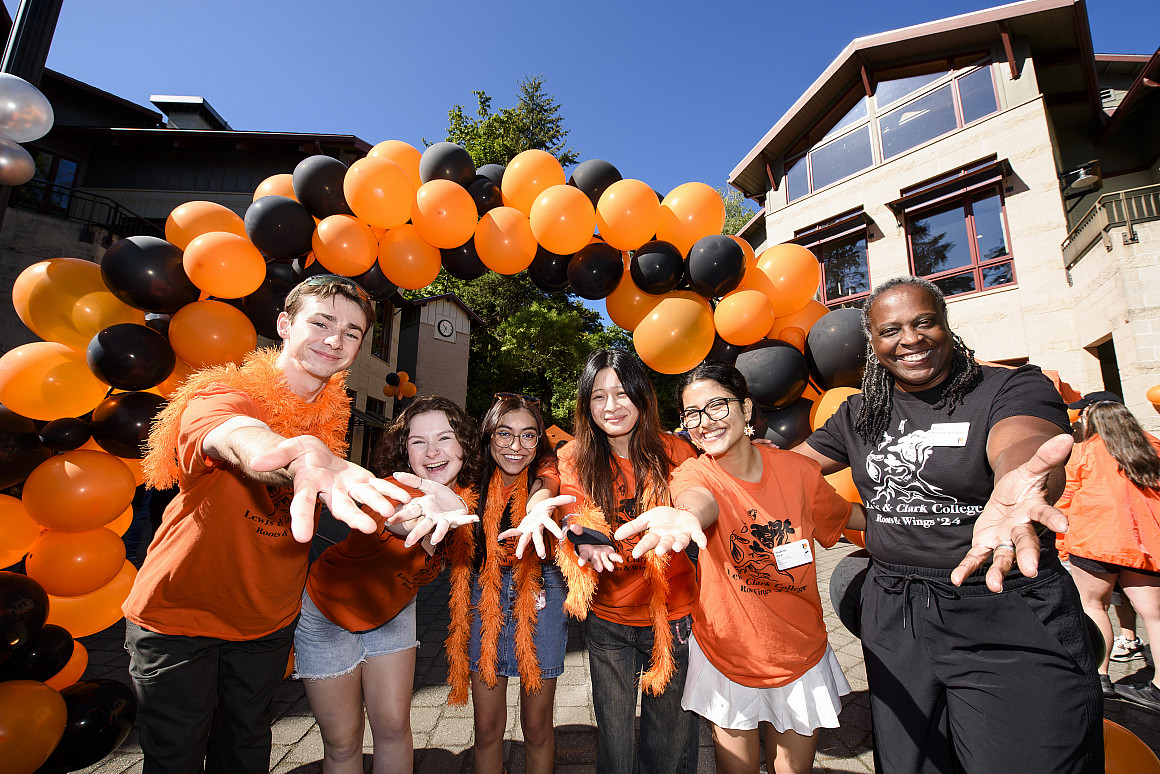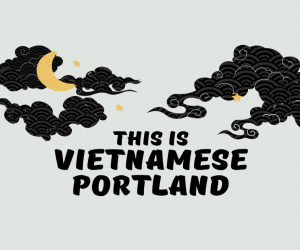main content A Focus on Student Resilience at ChronFest
President Robin Holmes-Sullivan was a featured speaker at The Chronicle of Higher Education’s virtual conference.
Thought Leadership

Earlier this month, President Robin Holmes-Sullivan joined fellow higher education experts as a featured speaker at Chronicle Festival, or ChronFest. The marquee event of The Chronicle of Higher Education, ChronFest brings thought leaders together to discuss important trends and ideas impacting higher education.
Holmes-Sullivan was joined by Jeremy Nobel, author of Project UnLonely: Healing Our Crisis of Disconnection. The session was moderated by Alexander Kafka, a senior writer at The Chronicle.
Kafka asked Holmes-Sullivan about a number of points from her opinion piece published earlier this year in The Hechinger Report, “Our college students are struggling emotionally. We need to understand how to help them.” He was particularly interested in an intervention that Lewis & Clark has used to help first-year students set expectations. Two of our psychology professors, Jerusha Detweiler-Bedell and Brian Detweiler-Bedell, spearheaded our participation in a multiyear Stanford-led study that aimed to foster a deeper sense of belonging among our incoming first-year students, with the goal of helping them understand that their struggles are normal—and that things will get better over time. The intervention proved so effective that Lewis & Clark has continued to incorporate it into New Student Orientation activities.
“We like the simplicity of it and have been tracking the results over time,” said Holmes-Sullivan.
The intervention aims to shift perceptions through a brief online exercise that involves about 30 to 45 minutes of reading, writing, and reflection. First-year students are provided with a handful of stories from other Lewis & Clark students, developed by the researchers from previous interviews. In each story, students from a variety of backgrounds share the excitement they felt about starting college—alongside a fear, concern, or challenge they faced and how they overcame it.
“By hearing about students just like them who have had some of the same concerns, worries, confusion―experiences normalized through the vignettes―they see how other students overcame or dealt with those challenges in a positive way,” said Holmes-Sullivan. “They talk about the exercise in a small group led by a new student peer mentor. The peer mentors lend credibility. There’s an authenticity to it.”
Data from last year shows that 81 percent of Lewis & Clark students who participated in a group led by a new student peer mentor reported that the interaction made them feel more connected to their peers.
Holmes-Sullivan also discussed the importance of a first-year community service experience that connects students to the city of Portland. This year, 400 first-year and transfer students participated in a volunteer city clean-up effort through a partnership with SOLVE, a Portland-based nonprofit environmental organization.
Nobel noted how important such a place-based initiative is to helping students feel “part of a larger story.”
ChronFest session moderator Kafka next turned to the panelists with a topic suggested by an attendee: “Have students really changed? Or have our perceptions of students changed?”
“This is a complicated question and one we should be talking about and talking about a lot,” said Holmes-Sullivan. “We hear a lot about the mental health crisis … how college students are struggling. And, of course, they are. It’s also true that the developmental stage of traditional-aged students is a contributing factor.”
College is a time to build those resiliency skills, she said.
“We don’t want to minimize the issues. This is a generation raised on social media in an age of troubling divisiveness, the climate crisis, and more. Those challenges are very, very real. But we need to be careful that we don’t over-pathologize students. We want to provide them with opportunities to build the skills they need to manage difficult emotions.”
Finally, Kafka asked Nobel and Holmes-Sullivan about the use of affinity groups to foster social connection and belonging.
“My experience has been that, for the most part, affinity groups are a wonderful tool, especially for younger college students,” said Holmes-Sullivan. “They are looking for something to belong to. It’s easier to feel like you belong to a group of people if you have something in common. It’s important for colleges to continue to provide those opportunities. Students don’t only participate in their affinity groups, in my experience. They may start there, but that’s not all they do. It’s a ‘way in’ to the larger campus community.”
More Stories

Textual Treasures
Paging Through the Past
In her Medieval Manuscripts course, Professor of English Karen Gross brings history to life with the help of Watzek Library’s rich archival collections. Students get hands-on experience with centuries-old texts as they explore the art of archival research.

Dance Moves
NYC-Based Dance Company In Step With L&C Students
The Tiffany Mills Dance Company, named for and headed by L&C’s director of dance, took part in a spring residency on campus, leading a series of community dance workshops and performing The Viola Trilogy alongside students.

Groundbreaking Science
A Quantum Leap for Physics Students
Ben Olsen, assistant professor of physics, is establishing Lewis & Clark’s first Quantum Information Science and Engineering lab to probe how unusual types of matter behave at the subatomic level. But first he and his students have to build “The Apparatus.”

Immersive Learning
Voices of Vietnamese Portland
Nhân Hàn BA ’27 and Thoan Nguyễn BA ’27, with project manager Zoë Maughan BA ’19, curated a 15-panel, bilingual traveling exhibit highlighting stories from Vietnamese Portland: Memory, History, Community, an archive documenting experiences of Vietnamese Portlanders.
